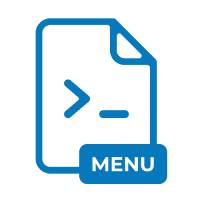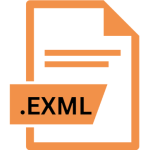.MENU File Extension

Quake 3 Engine Menu File
| Developer | id Software |
| Popularity | |
| Category | Game Files |
| Format | .MENU |
| Cross Platform | Update Soon |
What is an MENU file?
.MENU file extension is synonymous with customization and user interface management within the Quake 3 Engine, a groundbreaking platform known for its fast-paced gameplay and modifiability.
These files, integral to the engine’s operation, govern the structure and appearance of in-game menus, offering players and developers alike a powerful toolset to tailor their gaming experience.
More Information.
Upon its release, Quake 3 Arena revolutionized competitive gaming with its robust networking capabilities and responsive gameplay.
Central to its appeal was its user-friendly interface, which was highly customizable through .MENU files.
These files were designed to define the structure, appearance, and functionality of menus within the game, ranging from the main menu to in-game options and server browsers.
Originally, .MENU files were intended to empower modders and server administrators to modify and enhance the game’s interface without altering core game code.
This modular approach encouraged a vibrant community of developers to create custom menus tailored to specific gaming preferences, server configurations, or thematic modifications.
Origin Of This File.
The .MENU file extension finds its origins in id Software’s Quake 3 Arena, released in 1999.
As a successor to the immensely popular Quake series, Quake 3 Arena introduced a refined multiplayer experience supported by the Quake 3 Engine.
This engine not only facilitated intense online gameplay but also allowed extensive customization through its modular architecture, leveraging .MENU files to manage graphical user interfaces (GUIs).
File Structure Technical Specification.
The structure of .MENU files are rooted in a hierarchical format, typically written in a markup-like language resembling XML.
This hierarchical structure allows for nesting of elements such as buttons, sliders, text fields, and images, each defined with attributes specifying their appearance and behavior.
A typical .MENU file includes:
- Menu Definition: Defines the overall structure of the menu, including its title and background.
- Items: Individual elements such as buttons, sliders, checkboxes, and text fields.
- Actions: Specifies what happens when an item is interacted with, such as launching a game mode or adjusting settings.
- Layout: Coordinates the placement and alignment of items within the menu.
The technical specification of .MENU files vary slightly depending on the Quake 3 Engine version and any modifications made by community-developed patches or mods. The core principles of defining GUI elements and their interactions remain consistent across versions.
How to Convert the File?
.MENU files used in the Quake 3 Engine are specific to defining menus and user interfaces within the game environment.
They are typically written in a scripting-like language specific to the engine, which makes direct conversion into other formats challenging. Here are some practical approaches to handling .MENU files:
- Manual Recreation: Since
.MENUfiles define UI elements and behaviors within the Quake 3 Engine, converting them directly to other formats may not be feasible. Instead, developers often recreate the desired interface using UI design tools or frameworks suitable for their target platform. - Adaptation for Other Engines: If intending to use similar menu designs in another game engine, developers can translate the conceptual layout and functionality from
.MENUfiles into scripts or configurations compatible with the new engine’s UI system. - Exporting Data: In some cases, if
.MENUfiles include data or configurations that can be extracted (such as textual content or settings), these can be manually exported and reformatted for use in other contexts.
Advantages And Disadvantages.
Advantages:
- Customization: Enables extensive customization of the game’s user interface without modifying core game code.
- Modularity: Facilitates easy integration of community-created mods and enhancements.
- Accessibility: Allows server administrators to tailor menus for specific server configurations or events.
Disadvantages:
- Complexity: Creating complex menus can require a steep learning curve due to the hierarchical structure and syntax requirements.
- Compatibility: Compatibility issues may arise between different versions of the Quake 3 Engine or mods that modify .MENU file behavior.
How to Open MENU?
Open In Windows
- Notepad: Built-in text editor suitable for basic viewing and editing of
.MENUfiles. - Notepad++: Advanced text editor with syntax highlighting and code folding capabilities, ideal for working with complex
.MENUfile structures. - Sublime Text: Another powerful text editor offering various plugins and tools for efficient script editing.
Open In Linux
- Gedit: Default text editor for GNOME desktop environments, offering basic functionalities for viewing and editing
.MENUfiles. - Vim: Command-line text editor preferred by many developers for its extensive capabilities in handling and manipulating text and script files.
- Sublime Text: Also available for Linux distributions, providing a consistent editing experience across different platforms.
Open In MAC
- TextEdit: Built-in text editor that can handle
.MENUfiles, though it lacks advanced features compared to other third-party editors. - Sublime Text: Available on MacOS as well, providing robust features for working with script files.













